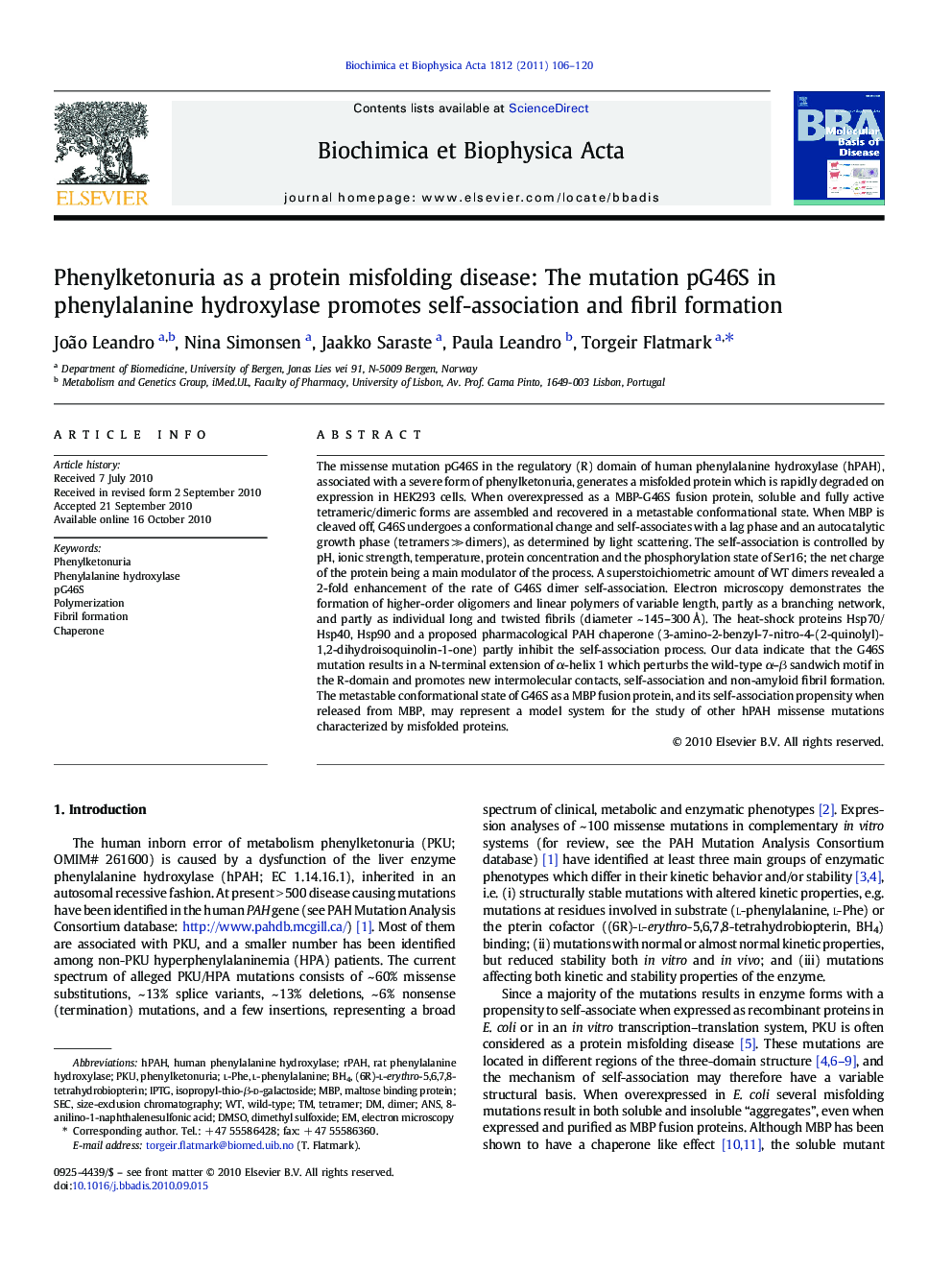| Article ID | Journal | Published Year | Pages | File Type |
|---|---|---|---|---|
| 1905287 | Biochimica et Biophysica Acta (BBA) - Molecular Basis of Disease | 2011 | 15 Pages |
The missense mutation pG46S in the regulatory (R) domain of human phenylalanine hydroxylase (hPAH), associated with a severe form of phenylketonuria, generates a misfolded protein which is rapidly degraded on expression in HEK293 cells. When overexpressed as a MBP-G46S fusion protein, soluble and fully active tetrameric/dimeric forms are assembled and recovered in a metastable conformational state. When MBP is cleaved off, G46S undergoes a conformational change and self-associates with a lag phase and an autocatalytic growth phase (tetramers ≫ dimers), as determined by light scattering. The self-association is controlled by pH, ionic strength, temperature, protein concentration and the phosphorylation state of Ser16; the net charge of the protein being a main modulator of the process. A superstoichiometric amount of WT dimers revealed a 2-fold enhancement of the rate of G46S dimer self-association. Electron microscopy demonstrates the formation of higher-order oligomers and linear polymers of variable length, partly as a branching network, and partly as individual long and twisted fibrils (diameter ~ 145–300 Å). The heat-shock proteins Hsp70/Hsp40, Hsp90 and a proposed pharmacological PAH chaperone (3-amino-2-benzyl-7-nitro-4-(2-quinolyl)-1,2-dihydroisoquinolin-1-one) partly inhibit the self-association process. Our data indicate that the G46S mutation results in a N-terminal extension of α-helix 1 which perturbs the wild-type α–β sandwich motif in the R-domain and promotes new intermolecular contacts, self-association and non-amyloid fibril formation. The metastable conformational state of G46S as a MBP fusion protein, and its self-association propensity when released from MBP, may represent a model system for the study of other hPAH missense mutations characterized by misfolded proteins.
Research Highlights►The PAH mutant form MBP-G46S-hPAH is recovered in a metastable conformational state. ►When cleaved off, G46S-hPAH self-associates forming higher-order oligomers and fibrils. ►The net charge of G46S-hPAH is a main modulator of its self-association. ►The self-association of G46S-hPAH dimer is enhanced by WT-hPAH dimer, forming hybrids. ►Hsp90 and Hsp70/hsp40 chaperones partly inhibit G46S-hPAH self-association in vitro.
